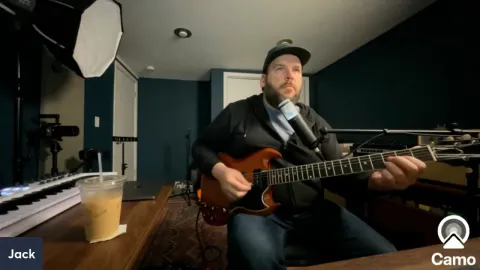In this masterclass led by Jack, the focus is on expanding guitar playing skills through the understanding and application of major and minor triads, as well as non-diatonic chord progressions. Jack begins the session by playing a rhythm guitar piece to lay the foundation for the discussion. Despite being under the weather with a cold, he seamlessly introduces the concept of triads, explaining how they are constructed and how they fit into diatonic and non-diatonic chord progressions. He uses the piano as a visual aid to further illustrate these concepts, making it easier for viewers to grasp the theoretical aspects of music theory related to guitar playing.
Throughout the masterclass, Jack demonstrates various triad shapes across the guitar fretboard, emphasizing the importance of understanding these shapes in order to improve improvisation skills and chord progression comprehension. He explains the significance of chord tones (root, third, and fifth) and how targeting these tones can enhance soloing and melody creation. Jack also delves into the concept of spread triads, showing how rearranging the order of triad notes can yield interesting and musically rich results. This portion of the masterclass is particularly hands-on, with Jack providing numerous playing examples to illustrate his points.
As the masterclass progresses, Jack discusses the practical applications of triads and spread triads in creating guitar parts that complement songs and other instruments. He encourages experimentation with the triad shapes and concepts discussed, suggesting that viewers apply them to different chord progressions to see what they can come up with. Despite some technical difficulties with his camera, Jack remains focused on delivering valuable guitar insights and tips. The session wraps up with Jack reminding viewers to explore these triad-based concepts further in their practice, promising to delve deeper into such topics in future live streams.

